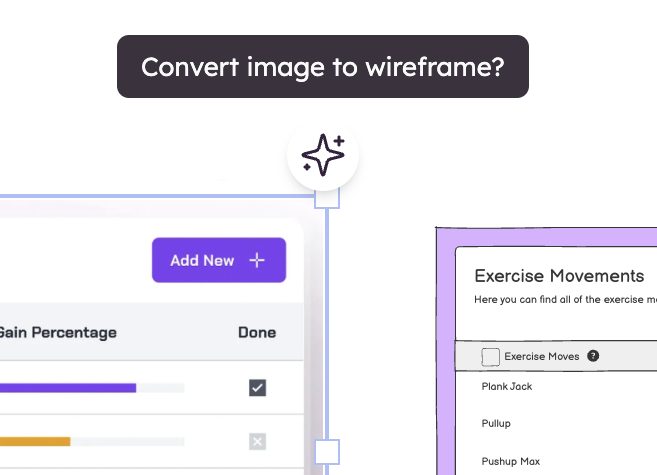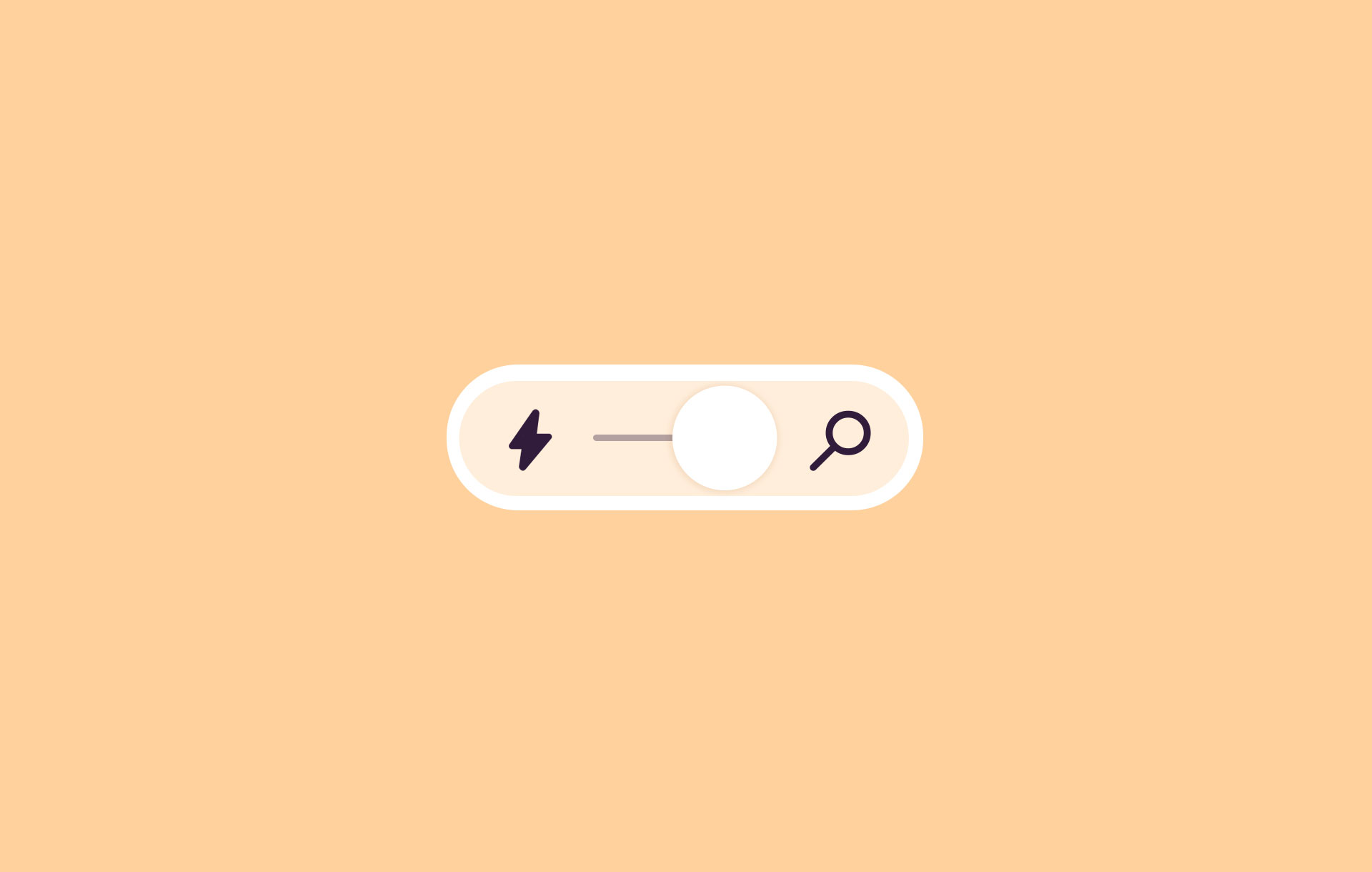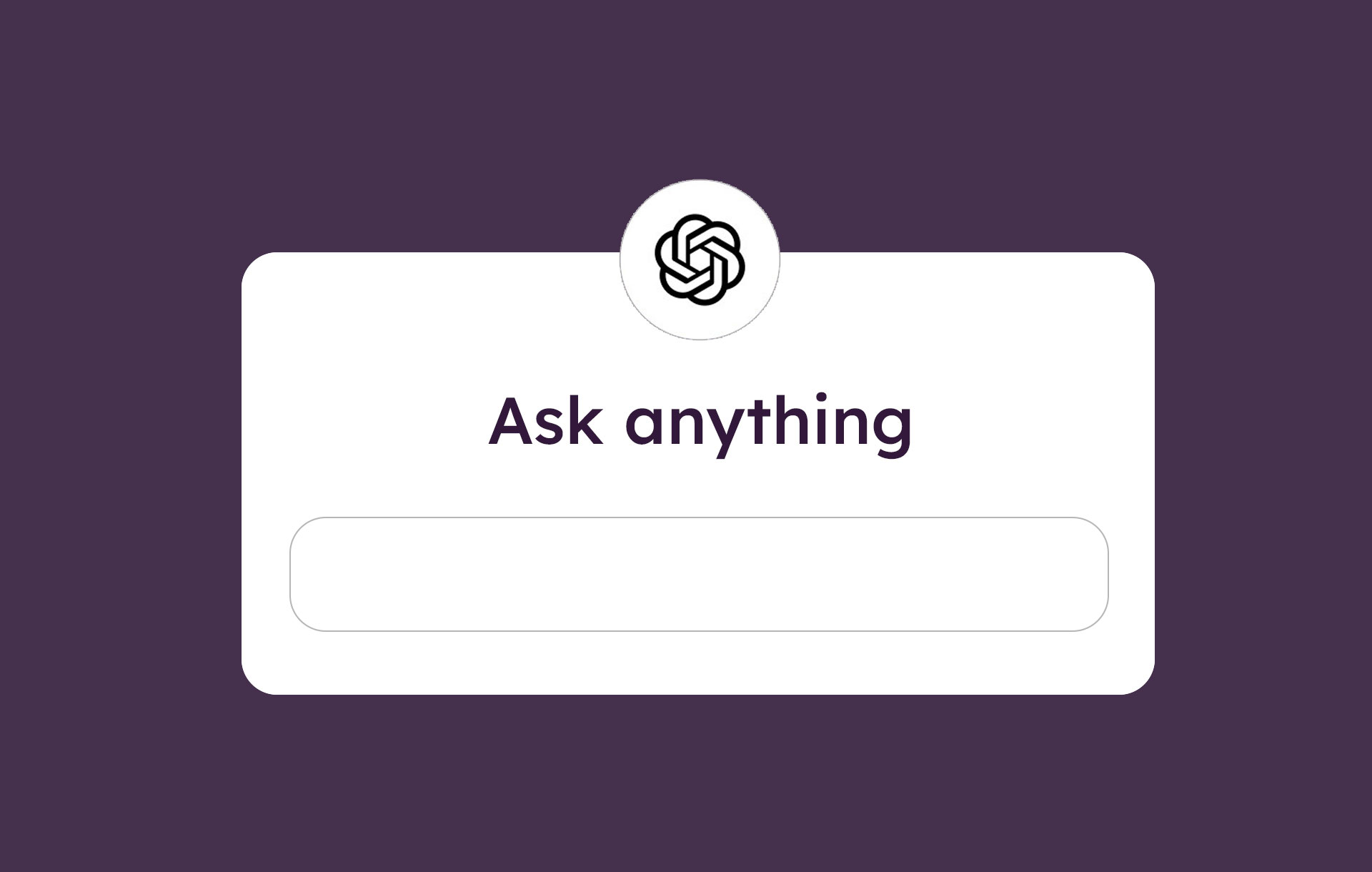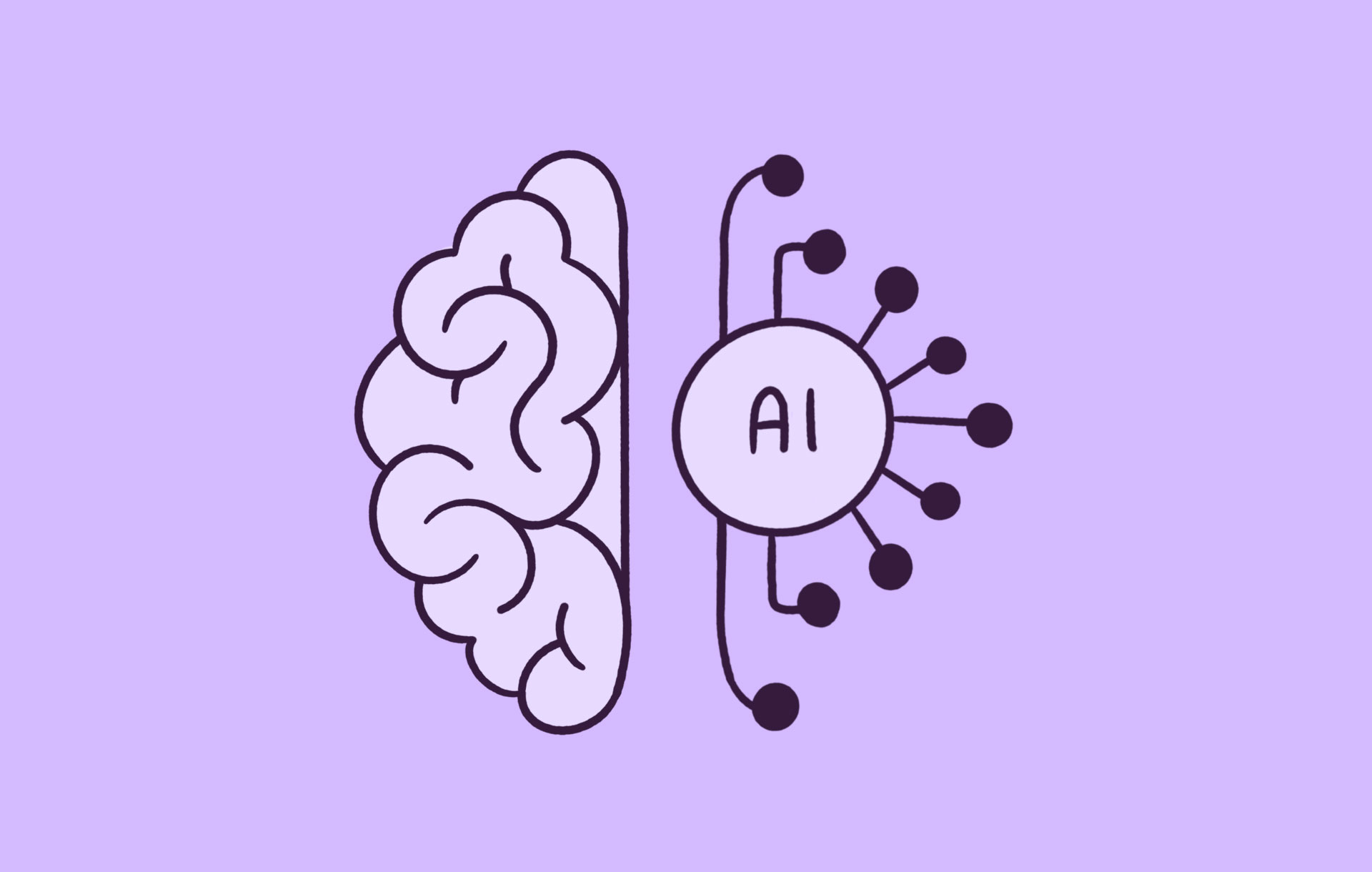If you’ve ever heard “Let’s tweak that flow” or “It’s not there yet” without anything concrete to work with… you know how frustrating that is.
You’re up against tight deadlines, expected to ship fast, and don’t have time to pull teeth just to get feedback you can actually work with. But, what if you had an always-on coworker that reduces vague feedback loops and helps you make better product decisions, faster?
That’s why we started messing around with custom GPTs: AI assistants trained on your context, product details, and domain expertise.
I recently sat down with Michael Angeles, our Lead Product Designer and co-author of ‘Wireframing for Everyone.” The two of us got to chatting about how custom GPTs can fill in the gaps and act like “kick-ass personal assistants,” (Michael has a way with words) for lean product and design teams.
In this post, I’ll show you how to build five actually-useful GPTs—some of which we use at Balsamiq! We'll also cover:
- What custom GPTs are
- How to build your first one
- Why they matter
What’s a custom GPT?
A custom GPT (generative pre-trained transformer) is like an AI assistant with your team’s collective brain plugged into it. Built in ChatGPT, you’re able to use generative AI in a way that’s trained on your actual stuff—design guidelines, product requirements, and all the quirky internal style rules of your team—rather than pulling from random internet data.
Michael put it this way:
“A custom GPT is like cloning part of your domain expertise into an always-on assistant. For us at Balsamiq, that means feeding it our design principles, Storybook docs, usability heuristics, and other open-source content. I like to use our Wireframing for Everyone book.”
With those resources baked in, your GPT doesn’t guess at best practices; it applies your team’s exact philosophy using your data every time.
How to build your first custom GPT
If this is your first time building a custom GPT, here’s a simple way to get started—no AI expertise required. This isn’t a perfect recipe, but it’ll help you build something useful, fast.
Step 1: Define a specific use case
Your custom GPT should solve a real problem—not just sound cool. A great starting point is a repetitive task you wish you could delegate.
Ask yourself:
- What do I want it to do? (I.e. Critique a wireframe)
- How do I want it to respond? (I.e. Provide specific feedback in a bulleted list)
Step 2: Feed it the right context
Now that you know what your GPT should do, it’s time to give it the resources it needs. Think of this like onboarding a new teammate.
You might include:
- Internal usability checklists
- Accessibility standards
- Naming conventions
Anything you’d share with a new intern? That’s probably worth including here.
Step 3: Set clear instructions
Now it’s time to write your prompt. Think of this step as writing your GPT’s job description—tell the AI what to do, why, and how to do it. You might consider giving it examples, constraints (format, length), or a role (“You are a product strategist”).
Examples snippets of instructions:
- Format output using Markdown
- Always explain your reasoning before giving an answer
- When reviewing a wireframe, reference usability heuristics
To improve your prompt:
- Review prompt engineering best practices from the LLM you’re using (I.e. OpenAI’s prompt engineering best practices or Gemini’s prompting 101 guide)
- Ask your GPT to improve its own prompt (it’s surprisingly helpful!)
Step 4: Set it live!
Now it’s time to start using your custom GPT! Bonus: if you think it’ll help others, make your custom GPT accessible to others and share it!
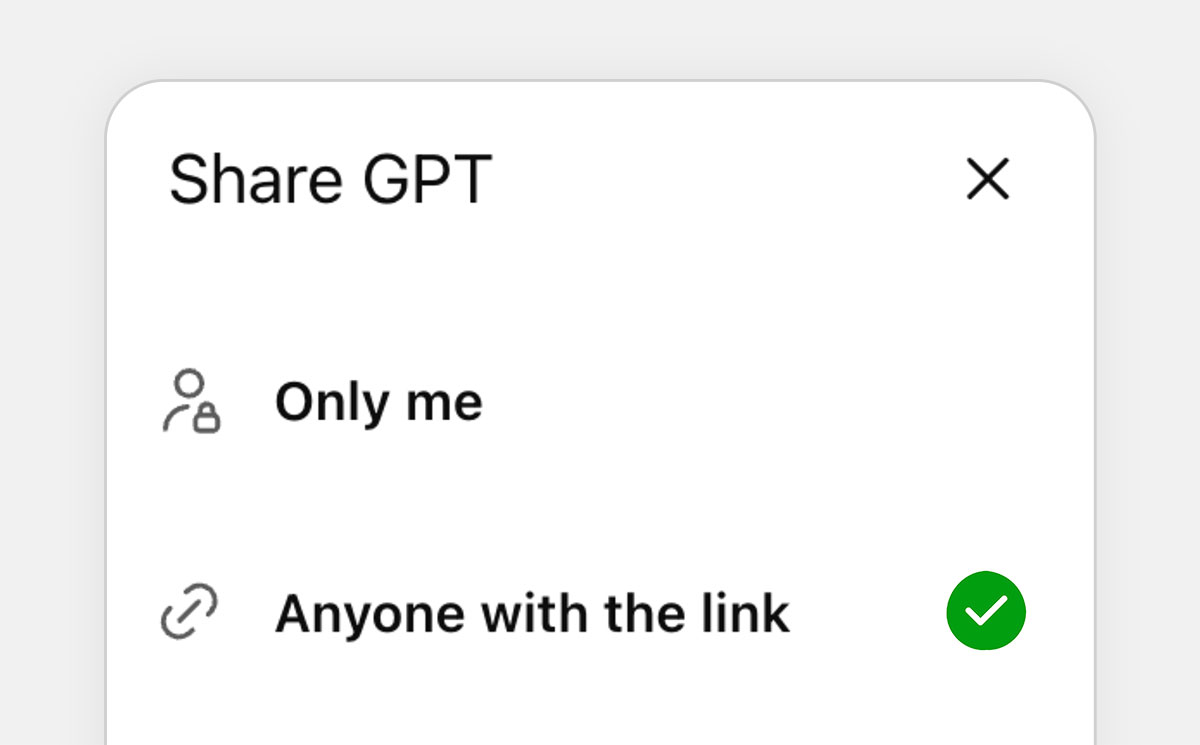
Like anything in life, what works for someone else might not work for you. To get the most out of custom GPTs, roll up your sleeves and start building. Experiment, iterate, and see what sticks.
5 Custom GPTs you can start building right now with minimal effort
Now that you’ve rolled up your metaphorical sleeves, it’s time to start building. Below are a few custom GPTs we’ve been testing at Balsamiq—ones that we’ve found genuinely useful for our team. Feel free to steal what works for your team and skip what doesn’t.
Each GPT example includes a:
- “How to build it” guide
- Real-world use case
- Sample prompts to use once your custom GPT is built
1. Design critique GPT—spot user experience (UX) issues fast
This GPT helps catch usability and UX concerns before you ship confusing flows or inaccessible screens. It’s kind of like having a design reviewer on demand who never gets tired of calling out ambiguous CTAs or missing navigation patterns.
How it works
Train it with your team’s usability principles (think: clarity, consistency, accessibility) and examples of what good vs. bad looks like. Then give it wireframes, screenshots, or user flows to critique.

Components you’ll need
- A list of team-approved UX heuristics
- Sample screens (these can be wireframes or mockups)
Context to include
- Usability checklist or design audit framework
- Annotated wireframes from past projects
- Accessibility standards
- Approved design principles
Sample prompts
- “Can you critique this wireframe for usability and aesthetics?”
- “What are some improvements I can make to this design?”
- “How does this design align with usability heuristics?”
- “Suggest changes to improve the accessibility of this UI.”
2. Design systems assistant GPT—answer visual implementation questions
This GPT speeds up visual decision-making for developers, especially when implementing UI components or applying design tokens. It helps reduce dependency on a designer for every spacing or typography question, like “should this be a button or a link?”
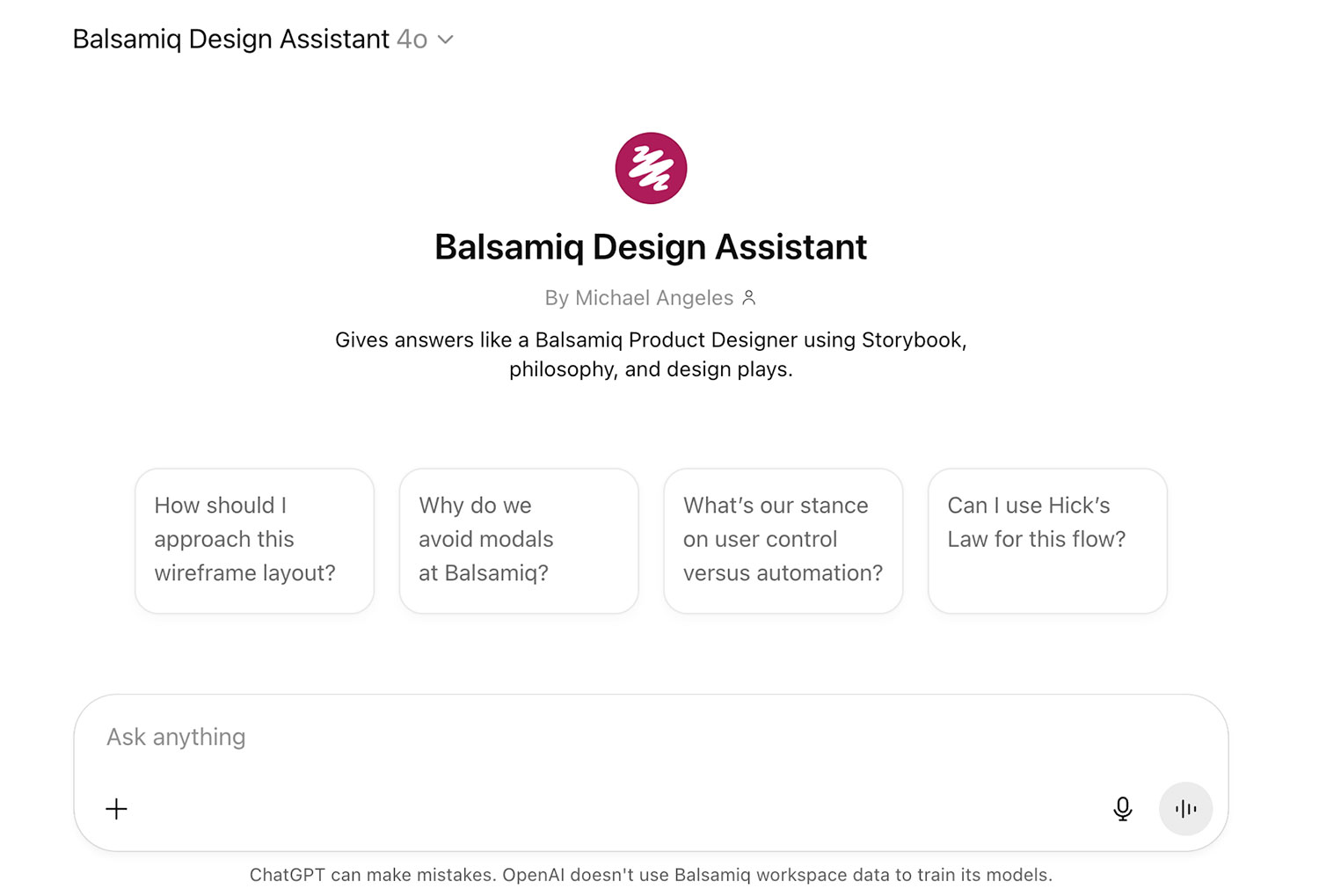
How it works
Load in your component documentation from tools like Storybook or Tailwind. Then use prompts to clarify styling or behavior details, especially for edge cases or device-specific layouts.
Components you’ll need
- Token and component documentation
- Layout specs for mobile, tablet, and desktop
- Style rules and naming conventions
Context to include
- Tailwind config or utility class guide
- Storybook component library
- Internal design systems overview PDF
Sample prompts
- “What Tailwind class applies our default card padding?”
- “Which navbar variant should I use for mobile screens?”
- “Show an example of our toast notification component.”
3. Product philosophy GPT—enforce product principles in design decisions
This GPT keeps teams focused on the why behind design decisions. Before anyone builds a feature, this GPT checks whether it fits the product’s strategy, company values, and MVP goals. Think of it as your roadmap's conscience.
This GPT also helps guide developers in making better design decisions on their own before seeking feedback from humans.
How it works
Feed in your vision docs, product manifesto, and team priorities. Ask it to evaluate ideas, prioritize requests, or challenge scope bloat—all with strategic alignment in mind.

Components you’ll need
- Product strategy overview
- MVP goals or guardrails
- Historical decision memos
Context to include
- Product vision slide decks
- Product philosophy
- Feature brief template
Sample prompts
- “Does this dashboard redesign align with our simplicity principle?”
- “Evaluate this feature against our MVP scope.”
- “What tradeoffs should we consider based on our philosophy?”
4. UX writing coach GPT—make your microcopy shine
CTAs like “Sign up” and “Submit” are not only boring—they’re vague and not specific enough. Inspire more action with a UX writing coach GPT. These can help you write microcopy that feels clear, motivating, and actually provides some value to the user.
How it works
Train it on your brand voice guidelines, tone preferences (e.g. casual vs. professional), and examples of good vs. bad copy. Then ask it to punch up your UI text or rewrite confusing labels.

Components you’ll need
- Brand voice guide
- Examples of approved UI copy
- UX writing principles (clear, empathetic, concise)
Context to include
- Past release notes that show how features were described to users
- Customer support transcripts or chatbot logs to surface real user language and tone
- Marketing copy (e.g. onboarding emails) that reflect your product’s personality
Sample prompts
- “Rewrite this tooltip to sound more encouraging.”
- “Review this onboarding screen and suggest microcopy that’s helpful for new users.”
- “Based on our brand voice, how can we rewrite this empty state message to feel more motivating without sounding pushy?”
5. Meeting translator GPT—make sense of what happened while you were multitasking
Ever leave a meeting with notes like “Make it pop” or “Feels off”? This GPT translates fuzzy, non-specific feedback into clear, constructive design guidance. It’s like having a built-in interpreter for stakeholder speak, creative ambiguity, and the occasional “Can we Apple-ify it?”
How it works
Give it transcripts, meeting notes, or Slack threads, and it can rewrite them into actionable design tasks, usability critiques, or follow-up questions. Bonus: it can even detect tone (e.g. passive-aggressive approval) and suggest how to respond diplomatically.
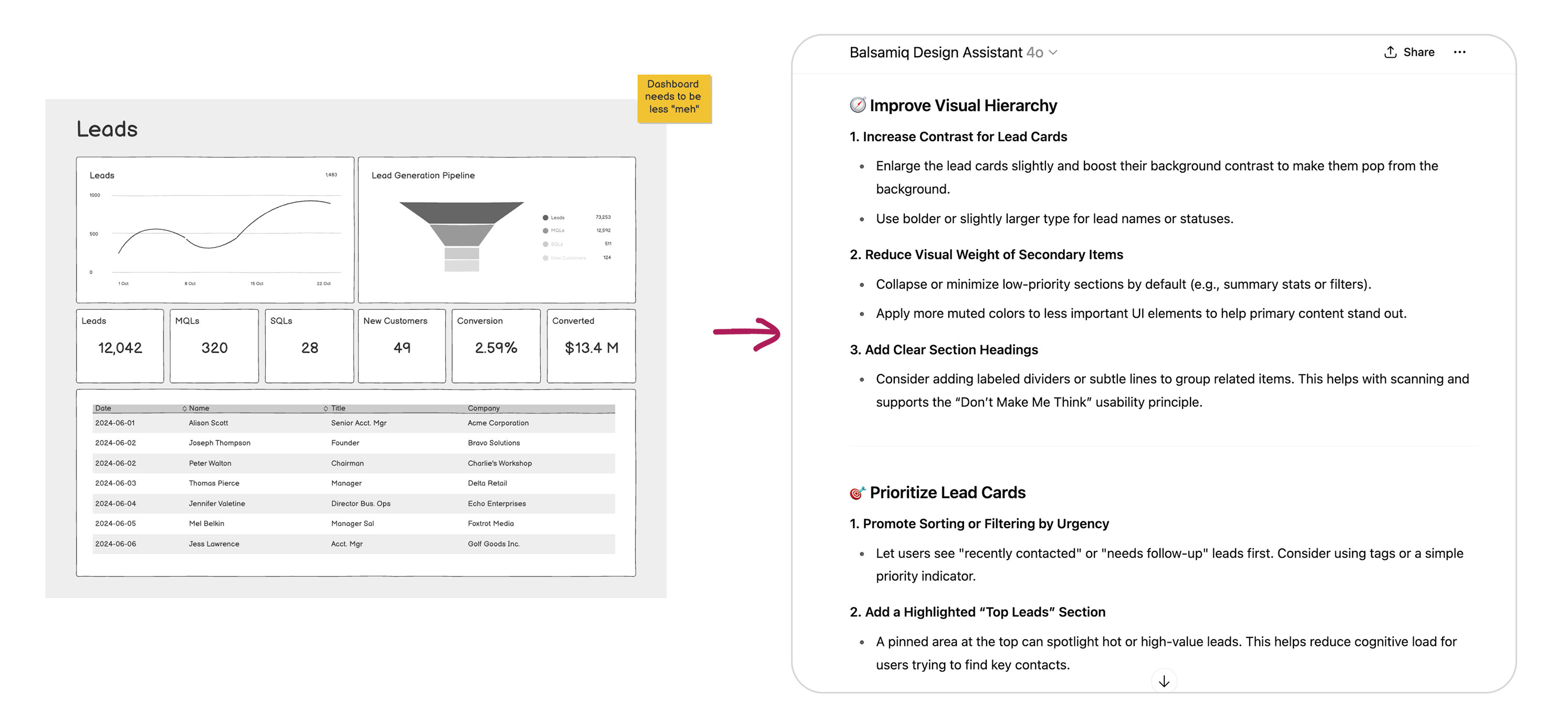
Components you’ll need
- Examples of past stakeholder feedback (the good, the bad, the cryptic)
- Your team’s preferred design language or critique format
- A glossary of internal buzzwords or phrases (“clean,” “modern,” “enterprise-y”)
Context to include
- Meeting transcripts or recordings
- Slack threads or email chains with design feedback
- Design review summaries or post-mortem notes
Sample prompts
- “Translate this feedback into 3 actionable design improvements.”
- “Here’s a transcript from our feature kickoff—what are the key design takeaways?”
- “What does ‘Can we make it more delightful?’ actually mean in terms of UI changes?”
Why custom GPTs are the new “product whisperer”
Yes, it’s true that you can always ask ChatGPT for help—but building a custom GPT tailored to your team’s style, principles, and quirks? That’s next-level. Here’s why more product teams are doing it:
Speed without the bottlenecks
Remote teams move fast—until someone has a question and the person with the answer is on the other side of the world (and sleeping). Think of custom GPTs as a cloned version of your design lead, only your custom GPT is always awake.
Leaner teams don’t have to wait for someone in a different time zone to respond. For example, Michael jokes that our developers in Italy no longer need to wait for him to wake up in California. It makes the product manager and designer relationship that much better!
This kind of autonomy means PMs and engineers can make solid decisions without constantly tapping a designer. And designers? They finally get space to focus on more strategic work.
Your team’s collective brainpower—always accessible
We’ve trained custom GPTs on everything from Tailwind tokens to our internal design book, turning static documentation into real-time expertise.
So instead of pinging your team, you just ask, “Which spacing token do we use for modals?” or “Can btn-secondary be used for cancellations?”
This kind of consistency reduces second-guessing and provides peace of mind knowing you have that type of unbiased thought power always on, waiting for you whenever you need it.
Feedback that doesn’t fluctuate
One day it’s “clean and modern,” the next it’s “too minimal.” Design opinions can vary wildly, especially across roles (and moods). With a custom GPT trained on your actual heuristics and product philosophy, you get objective feedback.
“It’s not reliant on how someone’s feeling that day. It’s an emotionless robot that will give you consistent feedback every single time.”
That reliability helps scale design quality across distributed teams, from interns to engineering leads.
Smart help, no training required
Even if someone’s never studied UX, they can still get great guidance. Custom GPTs make core design knowledge accessible across the org by translating principles into clear critique.
Think: a “design system guru” that answers spacing questions, or a “thought sparring partner” that brainstorms with you.
Adaptable problem-solving partner from critique to creation
Custom GPTs aren’t just there to nitpick—they’re fantastic at problem solving, too. Whether you need:
- A structured evaluation of a wireframe
- A brainstorm buddy for new flows
- Someone to roleplay as a confused user who got stuck at a crucial step in your wireflow
“I can’t predict every question, but my GPT often surfaces better questions than I would’ve thought to ask.”
They adapt to whatever design mindset you're in—helping you ask better questions, not just solve what’s already in front of you.
When paired with Balsamiq, you can spin up wireframes, feed them to your GPT, and in minutes, have actionable feedback—no lengthy meetings required.
Walk with us so you can start running on your own
AI can really move your product thinking forward, but it’s not a magic bullet. Building products or websites still needs your brain, your context, and a little human finesse to really shine. After all, it’s folks who are getting good at using AI that will thrive in the modern world.
But before you start feeding layouts into your custom GPT and marveling at the feedback, let’s not skip the most important step: building a solid wireframe in the first place.
Start with a low-fidelity wireframe that captures your ideas fast—boxes, labels, flow. Keep it sketchy. Keep it scrappy. When the bones are good, your GPT can do its best work pointing out gaps, nudging layout improvements, and asking the kind of questions your team didn’t think to ask.
So before you sprint ahead, take a minute to walk through the wireframe basics. It’ll make your AI assistant smarter—and your product better!
